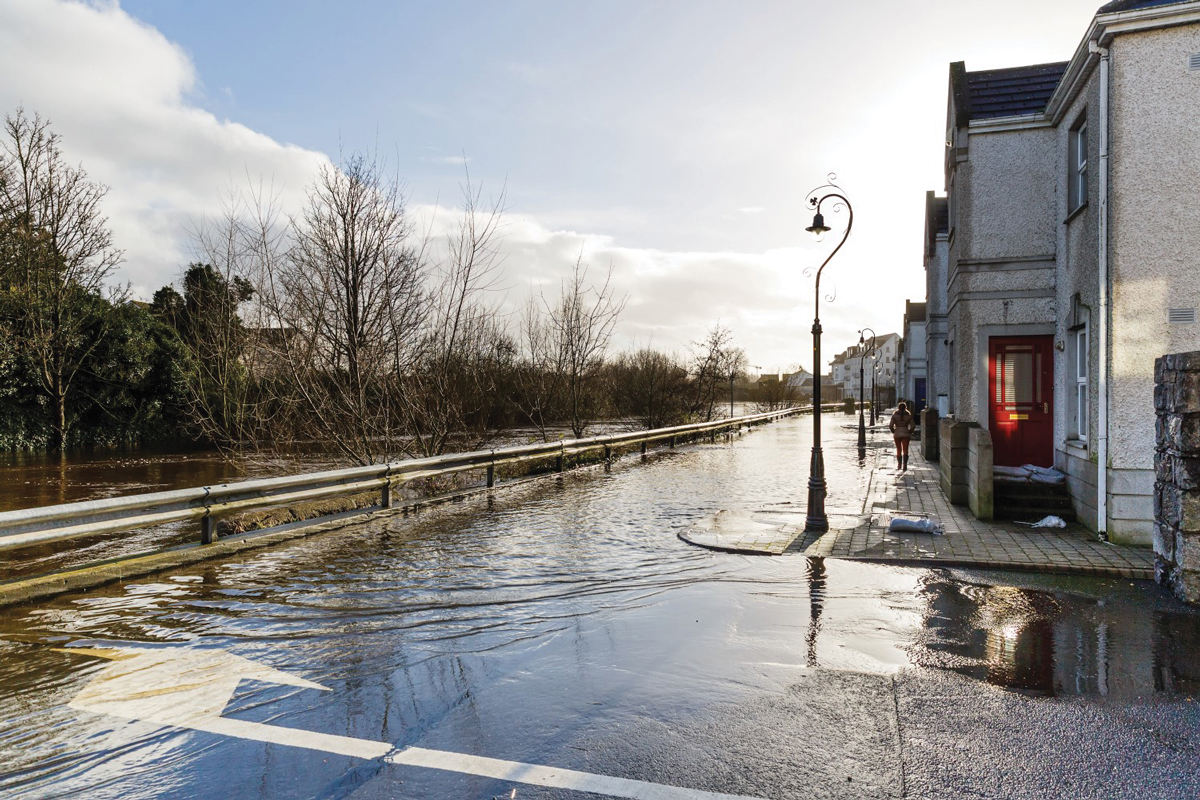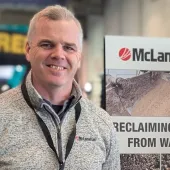Speeding up the SuDS revolution

First published in the March 2020 issue of Quarry Management
Paul Wagstaff, head of product management at Aggregate Industries UK, looks at how integrating drainage design at the very start of the feasibility stage of every project is the key to speeding up the SuDS revolution
Despite being a legal consideration for almost a decade, the deployment of effective sustainable drainage systems (SuDS) has, to date, been far too slow – often treated as an afterthought on any new-build scheme. However, evolving legislation, climate change and the social pressure to prioritize green spaces are all making the use of SuDS more critical than ever.
While the British weather has always been difficult to predict, recent years have seen a distinctive shift towards even more erratic weather patterns. One only needs to look at the persistent wet weather last autumn and more recently to see this, as an ongoing deluge of torrential rain throughout October and November resulted in widespread flash flooding across many parts of the UK, causing devastation and chaos in its wake, as did storms Ciara and Dennis in February this year.
Sadly, amid the ongoing climate crisis, the flood threat is set to increase – those were the words of the Environment Agency’s director of flood-risk management, John Curtis, who recently admitted that the flooding is likely to get much worse and happen more frequently.
Currently, around 5 million people live in flood-risk areas in England and Wales. However, with an estimated average global temperature rise of 4°C (far above the target of 1.5°C set in the legally binding 2015 Paris Agreement) by the 2080s, many at-risk UK towns may have to be abandoned altogether – that is, unless tangible action is taken now.
Yet, surprisingly, despite the very stark risk presented by flooding, the mitigation efforts around it have, thus far, been somewhat limited. Although the Government passed a new law requiring all new developments to include sustainable drainage systems (SuDS) in 2010, it quickly put the rules on hold in a bid to help developers keep costs down and speed up house-building rates.
Consequently, flood-defence measures have typically been overlooked in the building planning process, often being left as an afterthought in the final design stages, forgotten entirely or fitted retrospectively after a flood has happened.
Further exacerbating the issue is the rapid rate of urbanization. Increased infrastructure means an increase in impermeable surfaces – and thus less opportunity for natural ways of excess water to be diverted into the drainage network to local watercourses. Given the strain already put on the UK’s old drainage system, which was not built to cope with current volumes, in some cases this has resulted in sewer and surface-water flooding.
So, what is to be done if we are to help safeguard the UK from a large-scale flood crisis? While not a new concept, a good and often underutilized starting point lies with a SuDS strategy. In short, SuDS is a multi-layered drainage system designed to manage surface-water run-off in a bid to decrease flow rates to watercourses and improve water quality in a more sustainable and effective way than by conventional drainage such as pipes and tanks.
A typical SuDS will use a combination of water practices to form a holistic management system. This could include source control methods designed to decrease the volume entering the watercourses, such as a green roof consisting of vegetation or landscapes designed to intercept and retain precipitation, as well as pre-treatment steps such as vegetated ditches helping to remove pollutants. This may be supported with retention ponds, providing storage and treatment for excess water, and infiltration systems, such as trenches and soakaways.
But the considerations do not end there. In order to fully maximize a SuDS potential, it should be supported with the use of permeable surface material options. This could be, for example, a fast-draining concrete paving solution designed specifically to direct excess water off streets, parking surfaces and driveways, or a porous asphalt blend that will aid water-flow measures in vehicle-trafficked areas. Here, the remit is to allow water to pass through the material into the underlying permeable sub-base and thereby maximize control measures.
Of course, this approach does require investment, but it can deliver benefits on multiple fronts. When formalized as an integral part of the design process, good SuDS can significantly help control run-off and reduce peak flows, thereby reducing the risk of flooding while also improving the water quality with the removal of pollutants. Plus, in terms of sustainability, SuDS design can create new habitats and rehabilitate or enhance existing ones – benefitting the landscape, the community and helping developers tick the ‘green box’.
As we look to the future, the only way to tackle the current housing deficit will be to build more, but with flood incidents only set to increase, it will become ever more important for preventative measures to be incorporated into the inaugural development stages.
Furthermore, with the Government currently working on the latest draft of its Flood and Coastal Erosion Risk Management Strategy and flood-risk becoming an even more prominent consideration for would-be house buyers, the issue is not going to go away. For that reason, it is time for house builders to invest in good SuDS en masse and protect homeowners from flooding.
- Subscribe to Quarry Management, the monthly journal for the mineral products industry, to read articles before they appear on Agg-Net.com








